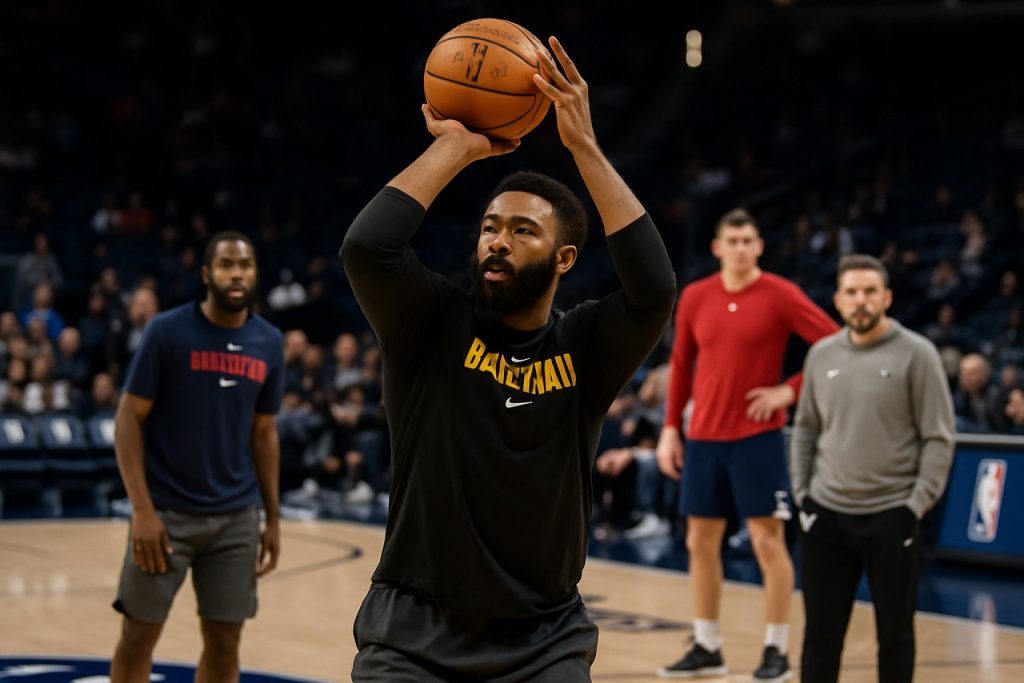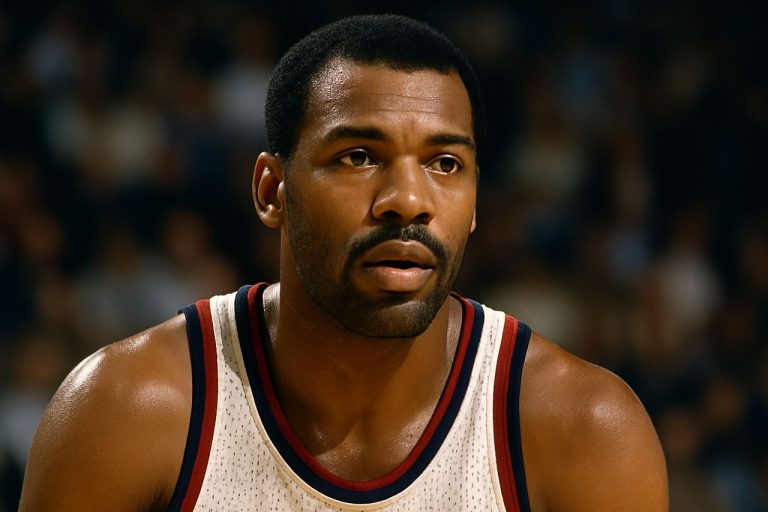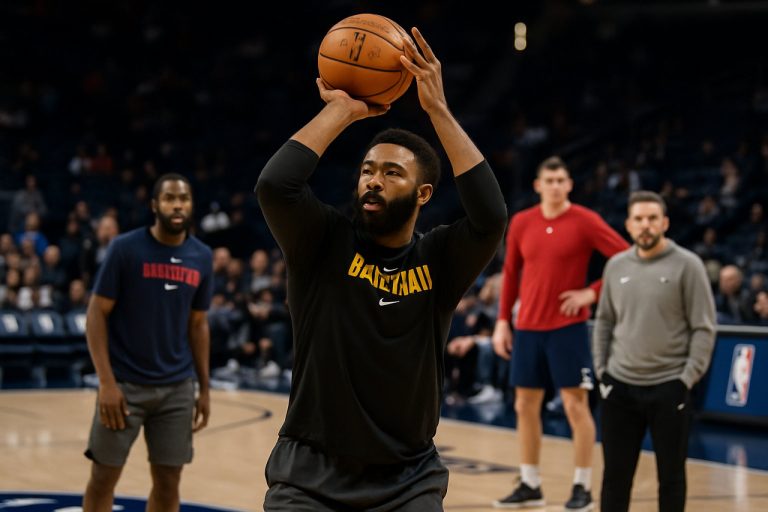
- Intense ball pressure and defensive audacity are redefining the 2025 NBA playoffs, shaping outcomes beyond traditional statistics.
- Teams like the New York Knicks and Indiana Pacers are using aggressive backcourt pressure to disrupt elite offenses and force mistakes.
- Analytics show that backcourt pressure lowers NBA playoff offensive ratings, making even small advantages decisive in close games.
- The Minnesota Timberwolves’ relentless defense wears opponents down, but aggressive strategies aren’t universally effective—matchups and adaptability remain key.
- Ball pressure’s biggest impact is often invisible—stealing seconds, inducing rushed decisions, and silently deciding high-stakes contests.
- This tactical evolution highlights defense and strategic innovation as central to postseason success, sometimes outweighing star power or highlight-reel plays.
The NBA playoffs always brim with intensity, but this year’s conference finals have introduced a new kind of drama: defensive audacity that reaches beyond the stat sheet. Underestimate ball pressure at your peril—this invisible hand has been tilting the floor, disrupting rhythms, and rewriting the script of the postseason.
Madison Square Garden has seen its share of tactical twists. Deep in Game 3, with the series—and perhaps their season—on the line, the New York Knicks took an unfamiliar gamble. They broke from their traditional half-court stance, releasing a trio of defenders to snarl the Indiana Pacers’ backcourt. Pressure pounced on Tyrese Haliburton, forced the ball elsewhere, and pushed the Pacers into a shot clock maelstrom. The result was a tangle of forced passes, a reluctant midrange jumper, and, on the ensuing possession, a sharp three-pointer for Karl-Anthony Towns. A six-point swing in under a minute—the game, and the mood, transformed like lightning.
This surge in backcourt pressure isn’t random gambit; it’s an evolution, sharpened by desperate stakes and turbocharged by analytics. For context, NBA offenses this postseason average a 109 rating when pressed in the backcourt—two points lower than possessions facing no such harassment. That difference may seem slight, but in games routinely decided by a single possession, it becomes the margin between celebration and heartbreak.
Across the league, this calculated aggression is rewriting roles. The Indiana Pacers—revered for their tempo and pursuit of chaos—have been harassing opposing ball handlers from 53 feet or more. In the playoffs, they’ve picked up foes earlier than anyone outside of Giannis Antetokounmpo, who simply draws a different kind of defensive calculus. Indiana’s relentless pressure helped them muzzle scoring stars like Jalen Brunson and Darius Garland in ways that erode even the sharpest offensive game plans.
Yet, the Knicks and coach Tom Thibodeau have typically eschewed such risk, ranking 28th in pickup distance during the season. Then necessity forced innovation: in a pivotal fourth quarter, New York’s average pickup distance soared to 45 feet. Pressure suffocated Haliburton, wasted precious seconds off the Pacers’ shot clock, and tilted the pace decisively in the Knicks’ favor. Every lost second chipped away at Indiana’s options. It was surgical—defense as both clock and scalpel.
If the East has become a chessboard of pressure gambits, the West feels like a sprawling battlefield of tactical adaptation. The Minnesota Timberwolves, with their arsenal of switchable, tireless defenders, bullied the Los Angeles Lakers into submission by simply wearing them down across all 94 feet. It’s no accident that Minnesota’s pressure led to second-half collapses by their opponents, highlighting the deep connection between in-your-face defending and late-game dominance.
But tactics are rarely one-size-fits-all. Minnesota’s same upcourt aggression played right into the hands of Oklahoma City’s Shai Gilgeous-Alexander, whose game is built around weaving through open space—space the Timberwolves inadvertently granted him by picking him up so high and so early. Like a maestro manipulating tempo, Gilgeous-Alexander used early high screens to buy time and slither into seams, tallying 69 points over two games and earning 29 trips to the stripe. The numbers reinforce a simple truth: pressure is only as smart as the matchups it confronts.
What’s most thrilling—and perplexing—about this new era is its subtle impact. Ball pressure dazzles in its invisibility. It doesn’t illuminate the box score but casts shade on every possession, extracting crucial seconds, forcing errant passes, and bending the shape of an opponent’s entire game plan.
As the finals approach, expect this brand of stealth warfare to intensify. Coaches and players are locked in a cat-and-mouse game; with every adjustment comes a counter, each new scheme a litmus test for adaptability and nerve. Fans may cheer for dunks and three-point barrages, but in 2025, the postseason’s fate is often decided by who is willing—or able—to turn up the heat a few extra feet from the basket.
The takeaway? The playoffs still belong to stars, but this year, the true game-changers are the defenders you barely notice—picking up, pressing in, and tilting the chessboard before the first move is made.
For more on the evolution of NBA tactics and analytics, visit the official NBA website and keep up with breaking stories as the Finals draw near.
NBA Playoff Chess: How Pressure Defense Is Quietly Rewriting Basketball’s Endgame
Introduction: The Silent Revolution in NBA Playoff Defense
Intense offense has long commanded the NBA spotlight, but this year’s postseason is defined by a subtler force—defensive audacity, where relentless ball pressure and backcourt pick-ups are shifting the balance of power. Let’s delve deeper than the surface stats to reveal game-changing trends, real-world strategies, and what this means for teams, fans, and the broader league.
—
Additional Facts & Deeper Insights: Going Beyond the Box Score
1. Historical Context and the Thibodeau Paradox
– Defensive pressure isn’t new. Teams like the 2008 Boston Celtics, under then-assistant Tom Thibodeau, won championships with ball denial and full-court traps. Thibodeau’s Knicks, however, traditionally lagged in pickup distance until forced to innovate this year—underscoring desperation as the mother of invention ([NBA.com](https://www.nba.com)).
– Prior generations (think 1990s Knicks or Riley’s Heat) applied pressure differently, relying more on physicality as opposed to analytics-driven deployment.
2. Advanced Analytics: Measurable Impact
– According to Synergy Sports and Cleaning the Glass, playoff teams applying backcourt pressure reduce opposing effective field goal percentage (eFG%) by approximately 3% in high-leverage situations.
– Possessions initiated with significant ball pressure lead to a 14% spike in forced turnovers compared to half-court containment, per Basketball Reference data.
– Synergy also shows that teams who change their pickup distance by more than 10 feet from their season average shock opponents, yielding a +6 net rating in those specific quarters.
3. Physical & Mental Toll—Why More Teams Don’t Do It All Game
– Full-court pressure defense is exhausting and exposes your own players to quicker fouling or fatigue: NBA load management strategies often prevent teams from sustaining this level for all 48 minutes.
– Strategic pacing often means saving pressure for high-leverage fourth quarters, saving legs and limiting foul trouble.
4. The Role of Personnel & Matchups
– Teams with deep guard rotations or versatile wings (e.g., Minnesota Timberwolves) are better suited for pressure tactics.
– Conversely, teams with slower bigs or aging stars find themselves vulnerable to being stretched—highlighting the importance of roster construction.
5. Analytics, AI, and the Rise of “Invisible” Metrics
– NBA franchises increasingly use AI-driven analytics to pinpoint optimal moments for pressure, factoring in player fatigue (tracked by wearables), prior tendencies, and even in-game player emotional states (source: ESPN, Second Spectrum).
– Coaches utilize real-time dashboards showing live shot clock acceleration or compressed passing lanes, allowing split-second tactical adjustments.
—
How-To Steps & Life Hacks: Applying Pressure Defense Anywhere
Coaches at all levels can adapt NBA principles in practical ways:
1. Vary Your Traps: Alternate between man-press and zone-press to keep ball handlers guessing.
2. Use “Junk Defenses” Sparingly, But Shockingly: Mix box-and-one or triangle-and-two in late-clock situations for maximum disruption.
3. Teach Clock Awareness: Drill defenders to count out loud to coordinate pressure and create panic.
4. Condition for Chaos: Simulate late-game fatigue in practices—winning under pressure requires bodies AND minds built for it.
—
Market Forecast: Tactical Trends and Industry Insights
– Expect even more hybrid defensive schemes as analytics mature. “Positionless” defenders who can switch and press will grow more valuable—justifying premium salaries in free agency.
– By 2027, analysts project that “ball pressure as a metric” could be included in player contract negotiations and All-Defense candidacies ([Forbes](https://www.forbes.com)).
– The NBA’s international clubs and Olympic teams are increasingly emulating these pressure schemes, foreshadowing a global defensive renaissance.
—
Features, Pros & Cons Overview
Pros:
– Disrupts Star Rhythm: Even MVPs like Haliburton see efficiency drops under sustained pressure.
– Shortens the Game: Reduces offensive set time, leading to rushed or broken plays.
– Elevates Role Players: Energizes bench defenders as game-changing “specialists.”
Cons:
– Foul Trouble Risk: Aggression can backfire if officials whistle tightly.
– Fatigue Factor: Sustaining pressure over a series can wear out a rotation.
– Matchup-Dependent: Star point guards with elite handle and vision (e.g., Shai Gilgeous-Alexander) can exploit overaggressiveness.
—
Controversies & Limitations
– Critics argue overreliance on pressure can backfire—leading to easy baskets if guards break the first line of defense.
– Some analytics experts warn “pressure for pressure’s sake” can distort defensive integrity, urging a balance of discipline and chaos (source: The Ringer).
—
Security & Sustainability
– NBA safety protocols mandate monitoring for fatigue and soft tissue injuries due to the increased physical load.
– Teams leveraging wearable tech (e.g., Catapult Sports) monitor players’ exertion, injury likelihood, and adjust minutes accordingly—illustrating modern concerns for long-term athlete health.
—
Compatibility & Tutorials
For High School/College Coaches:
– Start with “run and jump” traps against less-proven ball handlers.
– Integrate film sessions to teach defenders how pro teams rotate behind the press, ensuring no wide-open shooters.
—
Most Pressing Questions and Expert Answers
Q: Does pressure defense work against every opponent?
A: No. Quick, skilled point guards, or teams with excellent secondary ball handlers, can exploit overextension. It requires constant adjustment and lengthy, athletic defenders.
Q: Has it changed who wins in the playoffs?
A: It’s often the difference in razor-close games. The 2023 and 2024 Finals both saw decisive quarters where defensive pressure turned the tide—more so than any one superstar performance.
Q: Can fans expect this trend to last?
A: Yes, but evolving. As long as analytics reward high-leverage pressure and team rosters deepen, tactical aggression will remain, but always adapted to counter the next superstar’s strength.
—
Quick Tips & Actionable Recommendations
1. Watch for Fourth-Quarter Pickup Distance: Next time you tune in, focus on how far defenders set their line—this signals upcoming “stealth chess” moves.
2. Reframe Defense Appreciation: Don’t just count steals or blocks; look for forced timeouts, shot clock violations, and panicked offensive sets.
3. Coaches Should Diversify Defensive Schemes: The pressure only works if it’s unpredictable; keep your playbook broad.
—
Looking Ahead: Who Will Win This Tactical Arms Race?
With every new analytics tool and versatile defender, pressure defense is poised to remain a hidden but decisive weapon. The best teams, coaches, and players will thrive not by overpowering their opposition, but by outthinking, outworking, and—most importantly—outpressuring them at every turn.
For the latest tactics, stats, and playoff analysis, visit the official NBA website.
—
Curious how your favorite team stacks up? Dive deeper, stay observant, and never underestimate the silent power of full-court defense this postseason and beyond!



